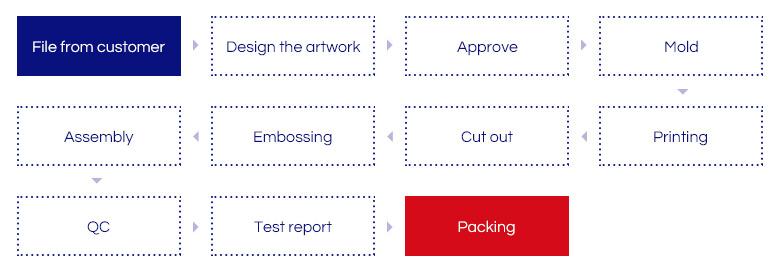Flexible printed circuits (FPC) are made with photolithographic technology. Flex circuits are often used as connectors or interconnect in various applications where flexibility, space savings, or production constraints limit the serviceability of rigid circuit boards or hand wiring. Flexible circuits are found in industrial and medical devices where many interconnections are required in a compact package or in instrument panels for automotive applications.
- Can accommodate tightly assembled electronic packages.
- Can be used in electrical connections where the assembly is required to flex during its normal use.
- Can be used in electrical connections between sub-assemblies to replace wire harnesses, which are heavier and bulkier.
- Can be used in electrical connections where board thickness or space constraints are driving factors.
- Can replace multiple rigid boards and/or connectors.
- Can have the ability to stack FPCs in various configurations.
- Have higher conductor conductivity compared to Membrane Switches.
- Single Layer.
- Double Layer with plated thru-hole allowing electronic components to be placed on both sides of the circuit.
- Multi-layer.
- Stiffener for stability, either polyester or polyimide.
- Variety of connector options available.
- Operating temperature: -40°C to 180°C.
- Copper conductor thickness: 0.5, 1.0, 2.0 oz (Rolled Annealed Cu).
- Flexible base material: Polyimide thickness 0.5, 1.0, 2.0mil.
- Coverlay material: Polyimide thickness 0.5, 1.0, 2.0mil.
- Plating finishes Tin-lead or immersion nickel/gold.
- Adhesive: Epoxy, Acrylic, or Pressure Sensitive Adhesive (PSA).
